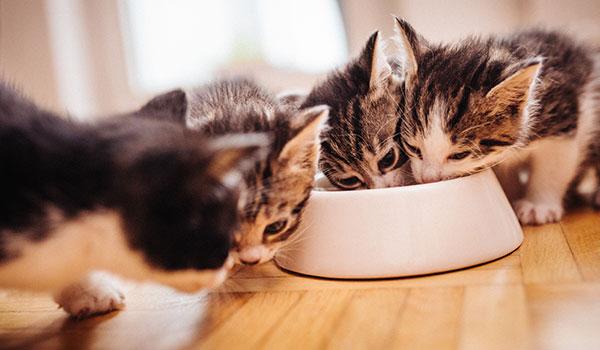Your guide to protein in pet food
Dog and cat nutrition advice from independent veterinarian Dr Pete Wedderburn

You may think that when it comes to feeding cats and dogs, the more protein the better. But pets have adapted and evolved over thousands of years of domestication, meaning the ideal diet could look significantly different to what you’ve been imagining.
Daily supply

As vet Pete Wedderburn* explains: “Protein is used to make the essential building blocks of the body – muscles, organs, skin. Enzymes, hormones and antibodies are also all made from protein. They all gradually wear down and need to be replaced, so a daily supply is needed."
He continues: “But it’s not the case that the higher the protein content the better. It’s highly unlikely that a pet won’t get enough protein and they are less likely to thrive on big chunks of meat than on well-balanced pet foods. These are produced by companies who employ nutritionists to ensure the correct amount of protein – and other nutrients – go into food.”
While not normally dangerous to healthy animals, an excess of protein provides no health benefits to pets and can contribute to environmental issues because of the nitrogen produced when it is excreted. An option considered to be more sustainable and eco-friendly is the use of animal by-products in pet food.
Far from being poor quality or of low nutritional value, any animal by-product used in the production of pet food (such as kidney, lung or liver) must come from an animal certified as fit for human consumption, and these ingredients are typically left over from human food production simply due to cultural preferences or personal taste.
Nutritious ingredients

Pete explains: “The terminology simply means any products that originate in animal tissue. All ingredients in pet food are human grade and they are highly nutritious and tasty to cats and dogs. It’s one of the most ecologically-sound ways of feeding pets.”
Likewise, the idea that raw meat is preferable to commercial pet food is another myth, explains Pete. “Dogs and cats have evolved to be able to eat ingredients that humans don’t want (such as offal) and there’s no scientific proof of any benefit to feeding raw food versus commercially produced dry and wet pet foods," he says.
Owners choosing a homemade raw diet should take particular care with hygiene when handling raw meat. "Humans cook food to kill bacteria, but with homemade raw meat diets, that bacteria will still be present. As well as potential health risks to dogs, there are also risks for the people around them as those bacteria will still be around the dog – for example, if they lick you, or on their bowl – and for anyone immunocompromised, this poses serious risks.”
Ultimately it is important to ensure your pet is getting all the right nutrients for healthy bodily function. Purina’s 100% complete and balanced products are formulated by pet care professionals and based on research and science, to deliver the best possible pet nutrition so that pets can benefit from a healthy coat, good digestion or abundant energy, all of it with the taste they enjoy and love. Visit the Purina website to see more on animal derivatives in pet food, protein in pet food and Purina ingredients, science and sustainability
*Pete Wedderburn is not an employee of Purina PetCare. He is an independent veterinarian with whom Purina PetCare collaborates on certain pet related topics and initiatives.

Bookmark popover
Removed from bookmarks